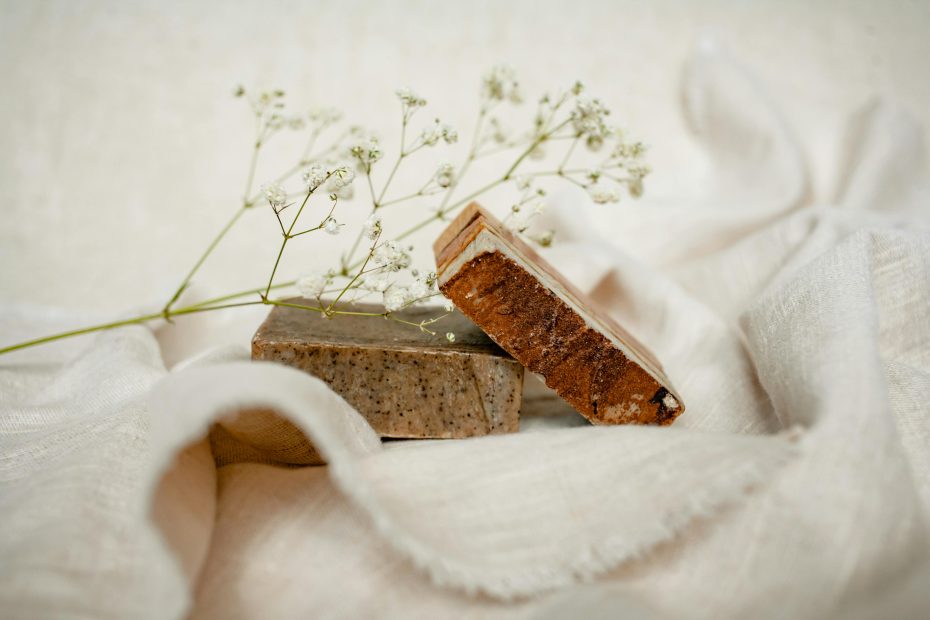Handmade soaps are a wonderful way to incorporate natural ingredients into your skincare routine. By using herbs and essential oils, you can create soaps that are not only gentle on your skin but also offer therapeutic benefits. Whether you’re a beginner or an experienced soap maker, these recipes for making handmade soaps using herbs and essential oils will inspire you to create luxurious, all-natural soaps at home.
In this guide, we’ll walk you through the basics of soap making, share easy-to-follow recipes, and provide tips for customizing your creations. Let’s dive into the world of natural skincare and craft soaps that nourish your skin and delight your senses!
Why Make Handmade Soaps?
Handmade soaps are free from harsh chemicals, synthetic fragrances, and artificial colors, making them ideal for sensitive skin. By using herbs and essential oils, you can create soaps that:
- Moisturize and nourish the skin.
- Provide aromatherapy benefits.
- Offer natural exfoliation.
- Support sustainable and eco-friendly practices.
Basics of Soap Making
Before we get into the recipes, let’s cover the basics of soap making. There are two main methods:
- Melt and Pour: This is the easiest method for beginners. You use a pre-made soap base, melt it, and add your own herbs and essential oils.
- Cold Process: This method involves making soap from scratch using lye, oils, and water. It requires more skill and safety precautions.
For this guide, we’ll focus on the melt and pour method, as it’s beginner-friendly and allows for creativity.
Essential Supplies
- Soap Base: Choose a natural base like shea butter, glycerin, or goat milk.
- Essential Oils: For fragrance and therapeutic benefits.
- Dried Herbs: For exfoliation and visual appeal.
- Soap Molds: Silicone molds work best for easy removal.
- Mixing Tools: A heatproof bowl, spoon, and measuring cups.
- Optional Additives: Clays, oats, or honey for extra benefits.
Recipes for Handmade Soaps
1. Lavender and Oatmeal Soap
Why It Works
Lavender essential oil is calming and soothing, while oatmeal gently exfoliates and moisturizes the skin.
Ingredients
- 1 pound of clear or white soap base
- 10-15 drops of lavender essential oil
- 1/4 cup of finely ground oatmeal
- 1 tablespoon of dried lavender buds
Instructions
- Cut the soap base into small cubes and melt them in a double boiler or microwave.
- Stir in the lavender essential oil and oatmeal.
- Pour the mixture into soap molds.
- Sprinkle dried lavender buds on top for decoration.
- Let the soap cool and harden for 1-2 hours before removing it from the molds.
Benefits
- Soothes irritated skin.
- Gently exfoliates and moisturizes.
- Promotes relaxation.
2. Peppermint and Rosemary Soap
Why It Works
Peppermint essential oil invigorates the senses, while rosemary stimulates circulation and adds a refreshing scent.
Ingredients
- 1 pound of clear or white soap base
- 10 drops of peppermint essential oil
- 5 drops of rosemary essential oil
- 1 tablespoon of dried rosemary leaves
Instructions
- Melt the soap base in a double boiler or microwave.
- Stir in the peppermint and rosemary essential oils.
- Add the dried rosemary leaves and mix well.
- Pour the mixture into soap molds.
- Let the soap cool and harden for 1-2 hours before removing it from the molds.
Benefits
- Invigorates and refreshes the skin.
- Stimulates circulation.
- Adds a natural, earthy scent.
3. Chamomile and Honey Soap
Why It Works
Chamomile is known for its soothing properties, while honey moisturizes and adds a natural glow.
Ingredients
- 1 pound of goat milk soap base
- 10 drops of chamomile essential oil
- 1 tablespoon of honey
- 1 tablespoon of dried chamomile flowers
Instructions
- Melt the soap base in a double boiler or microwave.
- Stir in the chamomile essential oil and honey.
- Add the dried chamomile flowers and mix well.
- Pour the mixture into soap molds.
- Let the soap cool and harden for 1-2 hours before removing it from the molds.
Benefits
- Soothes sensitive skin.
- Moisturizes and nourishes.
- Adds a calming aroma.
4. Tea Tree and Activated Charcoal Soap
Why It Works
Tea tree essential oil has antibacterial properties, while activated charcoal detoxifies and cleanses the skin.
Ingredients
- 1 pound of clear or white soap base
- 10 drops of tea tree essential oil
- 1 tablespoon of activated charcoal powder
Instructions
- Melt the soap base in a double boiler or microwave.
- Stir in the tea tree essential oil and activated charcoal powder.
- Pour the mixture into soap molds.
- Let the soap cool and harden for 1-2 hours before removing it from the molds.
Benefits
- Cleanses and detoxifies the skin.
- Helps with acne and blemishes.
- Adds a sleek, black color.
5. Lemon and Poppy Seed Soap
Why It Works
Lemon essential oil brightens and refreshes, while poppy seeds provide gentle exfoliation.
Ingredients
- 1 pound of clear or white soap base
- 10 drops of lemon essential oil
- 1 tablespoon of poppy seeds
Instructions
- Melt the soap base in a double boiler or microwave.
- Stir in the lemon essential oil and poppy seeds.
- Pour the mixture into soap molds.
- Let the soap cool and harden for 1-2 hours before removing it from the molds.
Benefits
- Brightens and refreshes the skin.
- Gently exfoliates.
- Adds a cheerful, citrusy scent.
6. Eucalyptus and Mint Soap
Why It Works
Eucalyptus essential oil is refreshing and invigorating, while mint adds a cooling sensation.
Ingredients
- 1 pound of clear or white soap base
- 10 drops of eucalyptus essential oil
- 5 drops of peppermint essential oil
- 1 tablespoon of dried mint leaves
Instructions
- Melt the soap base in a double boiler or microwave.
- Stir in the eucalyptus and peppermint essential oils.
- Add the dried mint leaves and mix well.
- Pour the mixture into soap molds.
- Let the soap cool and harden for 1-2 hours before removing it from the molds.
Benefits
- Refreshes and invigorates the skin.
- Provides a cooling sensation.
- Adds a natural, minty scent.
7. Rose and Clay Soap
Why It Works
Rose essential oil is hydrating and soothing, while clay detoxifies and balances the skin.
Ingredients
- 1 pound of clear or white soap base
- 10 drops of rose essential oil
- 1 tablespoon of rose clay or pink clay
- 1 tablespoon of dried rose petals
Instructions
- Melt the soap base in a double boiler or microwave.
- Stir in the rose essential oil and clay.
- Add the dried rose petals and mix well.
- Pour the mixture into soap molds.
- Let the soap cool and harden for 1-2 hours before removing it from the molds.
Benefits
- Hydrates and soothes the skin.
- Detoxifies and balances.
- Adds a luxurious, floral scent.
Tips for Customizing Your Soaps
- Experiment with Colors: Use natural colorants like clays, spices, or botanicals.
- Layer Scents: Combine complementary essential oils for a unique fragrance.
- Add Exfoliants: Use herbs, seeds, or oats for texture.
- Decorate with Botanicals: Press dried flowers or herbs into the top of your soap for a beautiful finish.
Frequently Asked Questions (FAQs)
1. Can I use fresh herbs instead of dried herbs?
Fresh herbs can introduce moisture, which may affect the soap’s shelf life. Dried herbs are recommended for soap making.
2. How long do handmade soaps last?
Handmade soaps typically last 6-12 months if stored in a cool, dry place.
3. Can I use fragrance oils instead of essential oils?
Yes, but fragrance oils are synthetic, while essential oils are natural and offer therapeutic benefits.
4. Is soap making safe for beginners?
The melt and pour method is safe and beginner-friendly. Always follow safety guidelines when handling lye in cold process soap making.
Conclusion
Making handmade soaps using herbs and essential oils is a rewarding and creative way to care for your skin. With these recipes for making handmade soaps, you can craft luxurious, all-natural soaps that nourish your skin and delight your senses. Whether you’re making them for yourself or as gifts, these soaps are sure to impress.
So, gather your supplies, unleash your creativity, and start making your own natural soaps today!

